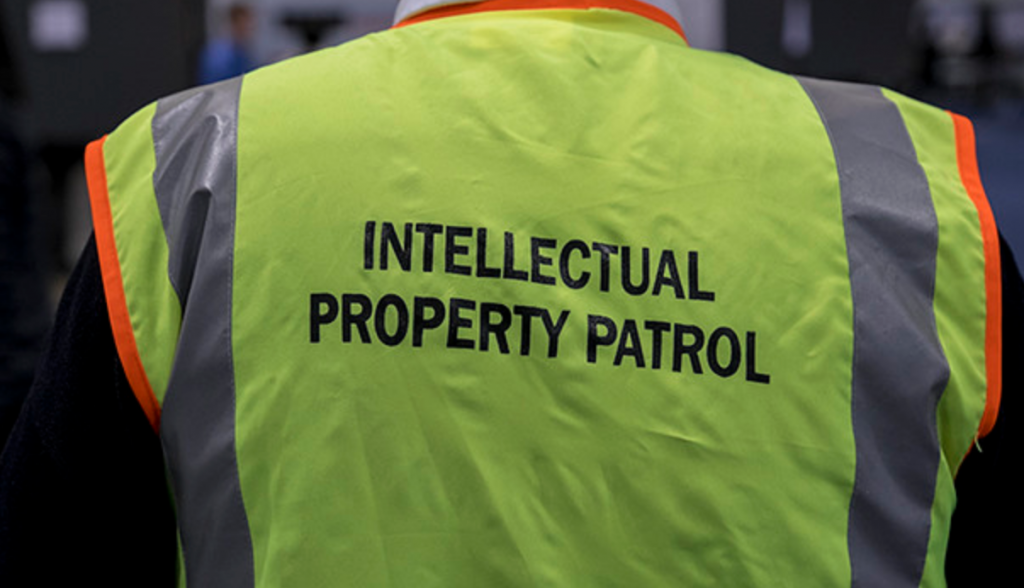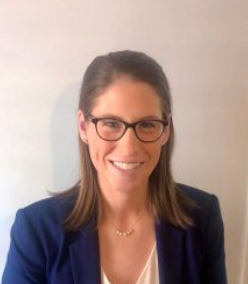Professor Nan Norton is currently on the adjunct faculty and library faculty at Loyola University Chicago School of Law. She teaches classes on trademark law, intellectual property (IP) research, and basic legal research to Loyola students. Prior to working at Loyola, she was a shareholder at Brinks Gilson & Lione, a highly regarded IP boutique firm in Chicago, where she practiced trademark law. Professor Norton also worked as corporate counsel managing IP matters and at a general practice firm. She is co-author of Trademark Practice Throughout the World and was a contributing author to Designing an Effective Intellectual Property Compliance Program, which is part of the Corporate Compliance Series.
What was your background before attending law school?
I was an art major in college, and I started working as a medical illustrator after I graduated. I did technical illustrations and graphic design for medical journals as well as instructional presentations. Basically, I would create drawings and diagrams to help illustrate medical conditions, and medical devices or procedures. Drawings are sometimes clearer than photographs for explaining a condition or procedure. I also occasionally observed surgeries and took photos that, depending on the need, would be used directly or turned into drawings.
What path did you take to start a career in IP law?
After being a medical illustrator for several years, I decided to go to law school. My brother was a lawyer, and it sounded interesting and felt like the right decision. But when I was in law school, there was no IP survey class or trademark class. IP wasn’t a big area of study in most law schools at the time.
When I graduated, I got a job at a general practice firm (one that handles all or most types of law) in Chicago, and I was thankful to have a job. There had been a stock market crash and firms were limiting job offers, so I was fortunate. I was doing mostly general commercial litigation, which involved a lot of research in different areas of law, like contracts, antitrust, and employment. I enjoyed that and research is a strength for me, but I never felt like I had any expertise in anything. One day I’d be working on a contract dispute, and the next it might be a bankruptcy case. Some people like that, but I wanted to master something and become an expert in an area.
The firm I joined didn’t have an IP department, but there was one lawyer in the antitrust group who did some copyright and trademark work. I knew that with my background in the arts, this was something I was interested in doing, given that much of this area of law involves artistic and creative pursuits. So, I went to his office and asked for work—just said I’ll take any work you can give me in this area, and the work kept coming! After I started doing it, I realized I liked it a lot. It’s a very visual practice area, and that was interesting and appealing to me.
When did your career in IP law really take off?
I worked at the general practice firm for about three years and then went in-house for a company that made children’s play centers. But a key turning point for me was when I started working at Brinks, Gilson, & Lione, a highly regarded IP boutique firm. I learned so much there from top experts in the field. I was fortunate to work with Jerry Gilson, the author of Gilson on Trademarks, a major trademark treatise, Jeff Handelman, who wrote the Guide to Trademark Trial and Appeal Board Practice, a go-to resource for lawyers in the field, and Mary Squyres, the original author of Trademark Practice Throughout the World. So I was really learning from the experts in IP law. I ended up becoming a shareholder at the firm and spending most of my career there.
What did you like about working at an IP boutique firm?
When you’re at a boutique firm, you’re working with experts on one area of the law. Their reputation rides on being experts on that one area, which means they must keep up with the latest developments in that area of law, write and give presentations about it, and may even contribute to proposing and drafting new laws. Also, boutique IP law firms have resources and procedures tailored to IP practice. As a result, I had the opportunity to work with the leading experts—the ones writing the books on this area of the law—and had access to IP-specific resources. So, my training there was top-notch. It also led to great opportunities, such as working with the author of Trademark Practice Throughout the World and taking over as an author of the book when she retired.
What does a typical day look like for a trademark lawyer?
One word that comes to mind is variety: there are so many different things you might do as a trademark lawyer. There’s trademark prosecution at the US Patent and Trademark Office, where you’re shepherding a trademark from filing the application all the way through the process to registration. This often involves responding to office actions from the Trademark Examiner. An office action is when you communicate with the Examiner to resolve any issues that may have been found. For example, the Examiner may require that you make some minor changes or may refuse registration based on grounds like descriptiveness, functionality, likelihood of confusion.
After your client has a trademark registration, there are maintenance requirements to keep the registration. Because trademark rights depend upon use of the mark in commerce, to maintain a registration, you have to show at certain intervals that the mark is still in use in commerce.
There’s also trademark clearance work. This involves conducting and reviewing trademark searches to see if a new mark that your client would like to use is available for use and registration. To determine this, you review trademark searches to see if there are any entities already using a mark that would be confusingly similar to your client’s proposed mark. That leads to counseling your client on potential conflicts.
Another type of trademark work is called trademark policing, which means monitoring to see if there are any existing marks that might be confusingly similar or diluting your client’s mark. If you do find something, you have to figure out the best way to handle that for your client and counsel them about that.

Of course, there is also trademark litigation work. So, there’s really a wide variety of work as a trademark lawyer.
What is something students might find surprising about being an IP lawyer, or a trademark lawyer specifically?
One thing I’m not sure everyone knows is that you do a lot of international work. Most clients who have trademark portfolios will have marks in countries outside the US, and even smaller businesses often have marks in Canada and Mexico. As a trademark lawyer in the US, you work with a network of foreign trademark associates in other countries that you consult with regularly. You usually meet them through the International Trademark Association, which is the key organization that trademark lawyers join. There’s even a student membership available, so that would be a good thing for students to join if they’re interested.
Another interesting fact is that as a trademark lawyer, you hire investigators. When you’re doing clearance work, you may see a mark in a search that is similar to the one your client would like to adopt, but it may be unclear what the owner is doing with the mark. So you’ll do as much research as you can in-house, but if that dead ends, you hire an investigator.
Also, if you think another party is infringing (i.e. violating) your client’s mark, the first thing you need to know, before you do anything, is who has priority, which just means who was the first to use the mark in commerce. Whoever that is will normally be considered the rightful owner of the mark. You don’t want to send a cease and desist letter and then find out the other party has priority. That party will then say it’s your client who needs to stop using the mark. Investigators can help figure out who has priority before you send that letter.
What made you decide to shift your career path into academia?
One of the things I loved about being a lawyer was teaching others—whether that was new associates, paralegals, or other staff members—I always enjoyed the teaching aspect of it. So academia seemed to be a logical transition for that. I’ve found that I still enjoy it. If I can help students, even in some small way, feel more prepared for and make the transition to practicing law a little easier, I’m happy to do that. In my classes, I have students work on things they’ll see in practice. We look at licensing agreements and work on drafting an office action response. That way, at least they’ve seen it once and had a chance to try it before they’re out practicing. In my IP research class, I give students a lot of practice with a variety of research questions, in an effort to make those research techniques become second nature. That way, when they start practicing, they can find an answer to questions they encounter.
What classes would you recommend to someone interested in IP?
Well, you should definitely take all of the IP classes that Loyola offers, specifically in your area of interest. I would also recommend a contract drafting class. You are going to read and draft a lot of contracts as an IP lawyer—settlement agreements, licensing agreements, assignments. Having knowledge on contract drafting will be very helpful for that. I also would recommend a negotiation class because lawyers spend a lot of time negotiating terms of agreements. A pre-trial litigation course would be beneficial too. Realistically, you rarely go to trial. Most of what you are doing is pre-trial (i.e. motions, discovery, etc.) and a class on that would be good to take.
What did you like most about being an IP lawyer?
I always enjoyed the relationships I built with my clients. In this field, you often have clients that you’ve worked with for a very long time. You take care of their intellectual property and counsel them on it, which was a part of the work I always really enjoyed. You really get to know people because a lot of things are ongoing issues—like portfolio management, which leads to long-term relationships. Often, you know more about the portfolio than the people who work for the client because you’ve been working on it for so long. It’s great to be so knowledgeable and helpful when you’re advising the client.
Also, trademark law is fun! If you’re going to be a lawyer, you might as well have some fun doing it! Sometimes the trademarks people create are funny, and there’s often a lot of creativity involved in trademark issues. One time we had a case where two clowns were suing each other over competing marks. You get to see things and work on things that just don’t come up in other areas of the law. A new development that has had amusing results is that lawyers are starting to think like marketing people. Instead of firing off cease and desist letters, they are coming up with innovative ways to work with the other side. Being a good lawyer is not always about being aggressive, sometimes it requires creative thinking, and it’s led to some funny results!

Maggie DePoy
Assistant Blogger
Loyola University Chicago School of Law, J.D. 2022
Maggie is a 2L who is enjoying her new seat in the classroom after spending seven years as a teacher in New Orleans and Chicago.